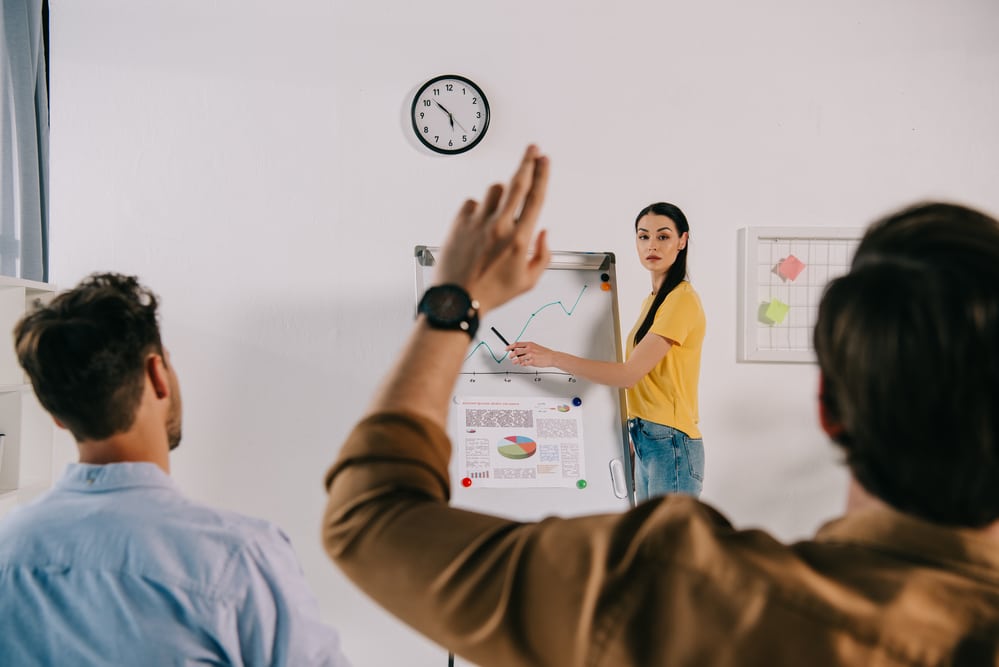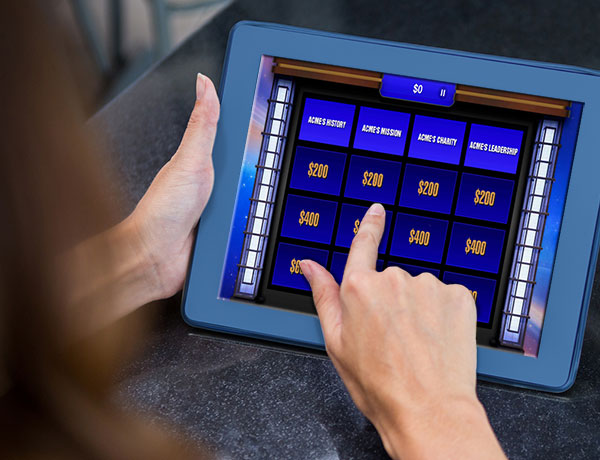“Do more with less.”
It seems to be a universal mandate. Is there any agency, organization or department that’s not operating under this sense of urgency?
Individuals are subject to the same imperative. In general, employees today have way too much work to do and not enough time to do it. There’s always another task to complete, another message to send, another meeting to attend, and another project to start.
This tension puts Learning and Development (L&D) leaders in a tough position—training programs can represent a good investment, but those programs are in an intense battle for employees’ time and attention. Yes, training and development helps employees become more efficient and effective at doing the work, and quality L&D programs can retain and draw talent to an organization. But training doesn’t help employees get through today’s to-do list, and the prospect of career advancement through training can feel too nebulous to attract the attention of someone who’s caught up in the daily grind.

To make matters more challenging, much of the training that’s traditionally available in larger organizations is passive and flat. It fails to capture the dynamic, multilayered nature of the problems today’s workers tackle on a daily basis. To learners, such training feels boring and irrelevant, again putting it low on the priority list. The result is that employees don’t engage in training and the organization doesn’t realize the potential of its training investment. Training budgets get slashed, and quality declines.
Gamification and game-based learning offer a way to overcome these challenges and escape this downward cycle.
“Not just a fad.”
The terms game-based learning (GBL) and gamification sound similar, but they’re different tools used for different types of challenges.
Game-based learning is a method in which learners play a game as part of the process of reaching specific learning objectives. From a learner’s perspective, GBL is about acquiring skills and knowledge through play. From a designer’s perspective, it’s creating a learning activity in which the game’s rules mirror some principle or pattern that learners need to understand as part of their everyday job, or as part of a curriculum of knowledge.
Games of various forms have been a part of organized learning for thousands of years. Modern applications of game-based learning often include digital games or instructor-led classroom experiences. Games have been used to:
- Evaluate leadership potential
- Train field managers how to respond to humanitarian crises
- Teach children about STEM concepts
- Improve readiness for infectious disease outbreaks
- Explore career options
- Help teens develop social skills
- Navigate difficult judgment calls for compliance training
- Support physicians treating patients with COPD
Gamification refers to the practice of applying game elements to non-game problems and goals. It’s taking certain techniques that can effectively shape attention and motivation (points, badges, leaderboards, and prizes are four popular examples) and applying them in a way that helps people focus on some area of personal growth and achievement.

“Game-based learning vs. Gamification.”
Gamification can take a wide variety of forms, but it often involves providing users with ways to track their progress towards a goal. Tracking progress motivates users to repeat a desired activity or change a behavior by tapping into our innate drive for achievement. Here’s a small list of examples:
- Fitness trackers like Fitbit and WHOOP are platforms that incorporate gamification techniques like daily goals and team leaderboards.
- Websites that depend on the engagement of their users include gamified mechanics that encourage participation. Stack Overflow, for example, offers reputation points and badges to participants who answer the questions that other users post to the site.
- The Arcades platform in The Training Arcade gamifies online training with features like quests, experience points, achievements, daily mini-games, and player-to-player challenges.
- Khan Academy employs progress bars and mastery points; Duolingo offers daily experience points (XP) goals with ever-increasing streaks for each day a learner meets their daily goal.
- The gamified productivity app Habitica lets players set up their own tasks to be completed in order to earn XP for their avatar and rewards like armor, mounts, and pets.
As illustrated by the above examples, the outcomes one aims to achieve with gamification are different from the ones addressed by game-based learning. GBL is an approach for creating dynamic, immersive, powerful learning experiences. Gamification is an approach for generating and sustaining motivation.
“Strategies and tactics.”
L&D professionals strive to provide meaningful experiences for learners that result in positive effects on the organization as a whole. L&D departments also seek strategies for sustaining and enhancing those positive effects. The aim is to keep learners continually engaged so that they (and the organization) can continually improve.
At The Game Agency, we consider GBL and gamification to be complementary to other more traditional L&D programs. For organizations looking to uplift their L&D offerings, we recommend a blended approach. Such an approach incorporates the strategic, community-building benefits of gamification along with the tactical, practice-oriented benefits of game-based solutions.
In gamification, users progress towards a goal in order to engage with a motivational system. In gamification for L&D, the goal will be relevant to both the user and the organization—to complete a course or pass a certification exam, for example. The system may involve community engagement, collaboration, competition, and other highly engaging elements that motivate people to continue participating (see the list of examples in the previous section).
Therefore, gamification within L&D contexts is a strategy for encouraging employees to engage more frequently and positively with learning. Gamification pulls learners into a journey and keeps them coming back over potentially long periods of time.
Gamification is strategic, while game-based learning is tactical. In the instances when employees benefit from focused training, game-based learning becomes a powerful tool. Game-based experiences immerse learners in rich environments with meaningful challenges. Games engage learners emotionally, forging the mental connections that make learning “stick” for lasting impact on performance.

“Play, Learn, Win.”
Blending gamification and game-based learning creates a virtuous cycle. Learners play games, and by playing, they learn. By learning, they win; they progress towards their gamification goals and develop their skills on the job. Play → Learn → Win → Repeat. The learner and organization both win.
Today’s organizations need employees to learn more and perform more. The solution is to create an environment where employees want to learn.
Organizations can achieve progress in this area by expanding game-based learning on a targeted level. As employees experience training that feels relevant and reflects the dynamic nature of their daily work, they’ll prioritize and complete training when offered.
Still, even better results are generated when GBL is deployed within a gamification system. The gamification system creates and reinforces a culture in which employees support each other in continuous learning. At The Game Agency, we have the authoring tools, game designs, and implementation processes needed for organizations to quickly and cost-effectively deliver game-based learning and gamification that will improve employee learning and performance.
Would like to see a demo of Arcades? Schedule a 1:1 call here and start your free 2-week trial!
Further reading and case studies:


